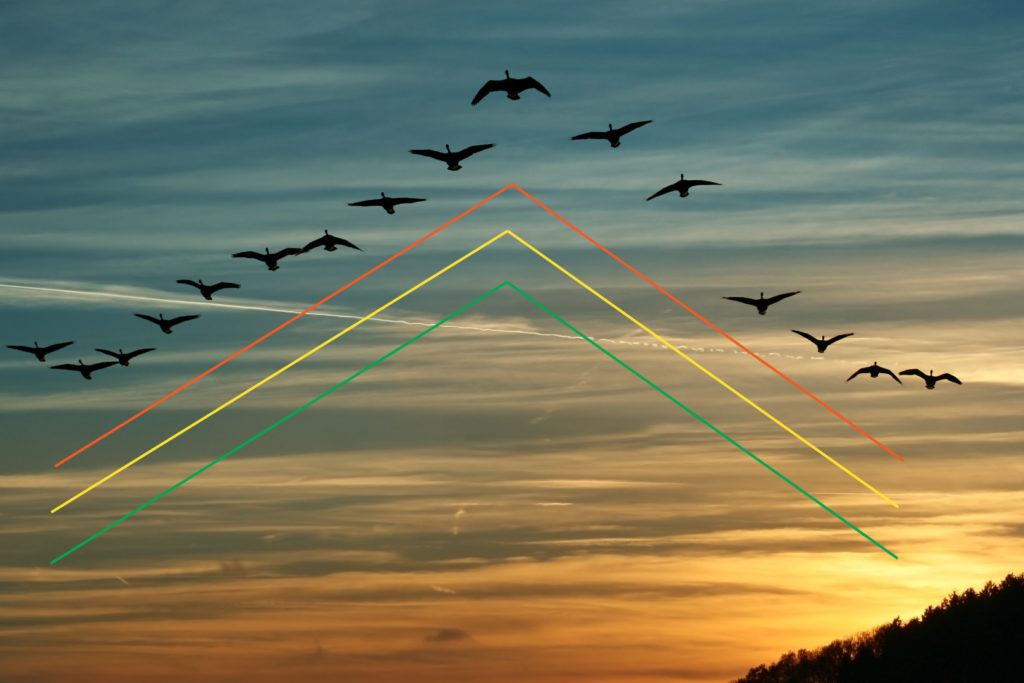
A Tutorial on Teamwork: 4 Lessons from Canadian Geese
Ever watch the migration of Canadian Geese? Do you wonder why they fly in a perfect V-formation? Or, how they’re able to travel thousands of miles so efficiently and productively with the entire group still intact? Every fall geese migrate south to warmer climates in the United States, and then back to Canada in the spring. Experts have long studied this movement of geese and other migratory birds uncovering valuable discoveries from Mother Nature.
Turns out there’s a lot to be learned from our feathered role models for team success. Here are four critical lessons:
- High-functioning teams are more productive than going it alone. When birds fly in the classic V formation, each bird flies slightly higher than the one in front of them. This reduces wind resistance and produces an updraft that helps individual birds to conserve energy. The entire flock, then, can fly more efficiently reaching their destination significantly quicker than if a single bird was flying solo. Have you ever tried to go it alone, only to realize that you’re more successful when you tap into the power of a productive team? The most effective teams produce their own updraft by bringing together diverse perspectives and experiences which, when allowed to play out can collectively produce better outcomes. It’s the secret sauce of a team that works.
- Shared leadership empowers others allowing the team to flourish. In the V formation, there’s one goose at the point which bears the full weight of the wind that comes with the leadership position. Are they the strongest or the smartest or the most experience of the flock? On the contrary. Migrating geese share the leadership position. When the bird in front inevitably grows tired, they move to the back of the formation allowing another goose to take the lead. In essence, they become followers. What’s the lesson here? Sharing responsibility and empowering others to lead is infinitely more beneficial to both the individual and the team. Great leaders also understand how and when to follow.
- Regular communication is essential for team success. When geese are flying together, they are constantly honking and moving their eyes and heads. What’s this about? Maybe they’re cheering each other on, or informing the leader they’re behind them, or perhaps simply giving each other updates and letting everyone know their position. Sounds a lot like what effective teams do. Regular communication regarding progress, challenges, solutions and the general status of things are key conditions for team productivity and progress.
- Collaboration and support are critical for effective teamwork. When a goose weakens for some reason and cannot keep pace or continue flying, another one always drops out of formation with them. When the weakened bird gains strength again, both birds continue the journey together finding another flock they can fly with until they can rejoin their original group. In the workplace, it’s unlikely each member of a team can maintain peak performance at all times. Inevitably things happen. The best teams are built on a foundation of trust and collaboration where each team member gives others the benefit of the doubt and knows they have their back when needed.
Next time you see geese migrating overhead, remember that the way of nature can also be your team’s way. Flying together. Supporting one another. Reaching the destination more productively and successfully. Simply apply mother nature’s lessons and you, too, can lead the way.
